Spring raspberry care: tips and tricks
Raspberry, like all other berry crops, requires the implementation of certain agrotechnical measures for its cultivation. Accordingly, in order for the shrub to immediately begin to actively grow and develop after winter, it needs to be properly cared for from the first days of spring.
Read on to learn more about what to do with raspberries in spring, the main stages and features of spring care!
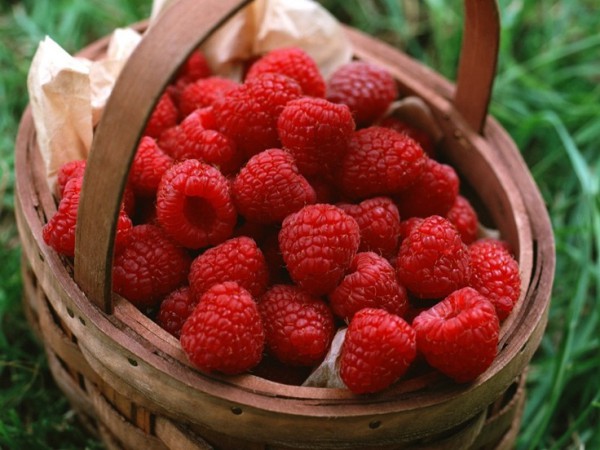
Content
When to start carrying out spring raspberry care after winter: estimated dates
Often, work on spring care for raspberries after winter begins immediately after the snow melts, the ground in the garden dries up a little, and the air temperature becomes positive and settles at about +5 degrees.
Although some gardeners highly recommend doing the first early spring feeding of raspberries with urea still over the melting snow.
Thus, it is not worth pulling, all the same, care measures are carried out gradually and not at once.
As for the approximate dates for the beginning of spring work in the raspberry-tree, then, depending on the climatic zone of the region, they are roughly as follows:
- So, in the southern regions, they start caring for raspberries in early spring - in mid-March, immediately after the ground dries up a little.
- In the Middle Lane (Moscow region), after winter, they begin to take care of raspberry bushes much later - somewhere in the second half of April.
- In the North-West (in the Leningrad Region), as well as in the Urals and Siberia, spring care for raspberries is carried out towards the end of April-beginning of May.
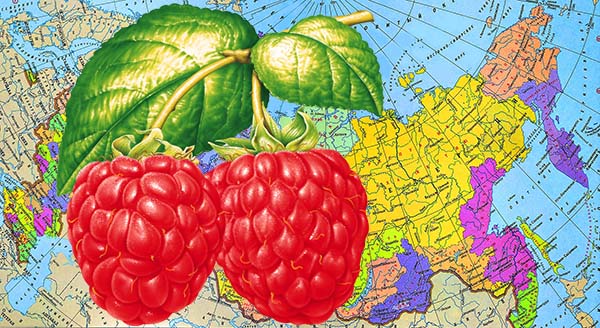
How to care for raspberries in spring: basic activities
As we found out earlier, spring care for raspberries starts together with the first sunny days, which come in different regions at different times, but the work scheme itself is about the same.
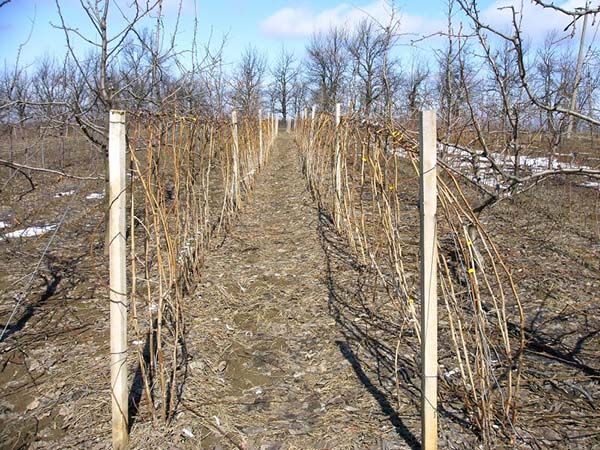
So what should you do with raspberry bushes in the spring to get a rich harvest of large and tasty berries?
As a rule, the list of the main measures for caring for raspberries in spring includes the following:
- trimming;
- garter;
- watering;
- mulching;
- loosening and weeding;
- top dressing;
- treatment against pests and diseases.
- transfer.
Next, we will take a closer look at each agrotechnical technique in more detail.
Video: how to care for raspberries in spring
Cleaning and weeding raspberries after winter
The first step is to remove all the old mulch, weed it out, and also rake all the remaining debris, the same last year's leaves, and so on, from the trunk circle of the bush, and then burn it.
Together with organic residues, you will get rid of many insect pests and fungal spores left over from the winter. In addition, the open soil warms up faster with the sun's rays, which will further stimulate the plant by the beginning of the growing season.
Watering and loosening
Note! Any raspberry is very fond of watering (especially remontant), and it is necessary to water very abundantly.
Indeed, the fruiting of raspberries largely depends on proper watering.
Thus, in order to constantly provide the raspberry with nutritious moisture, you need to evenly and completely soak the earthen lump to a depth of 20-30 cm (this is the depth of the main roots of the raspberry bush).
The average watering rate for raspberries is 30-40 liters per 1 sq. M.
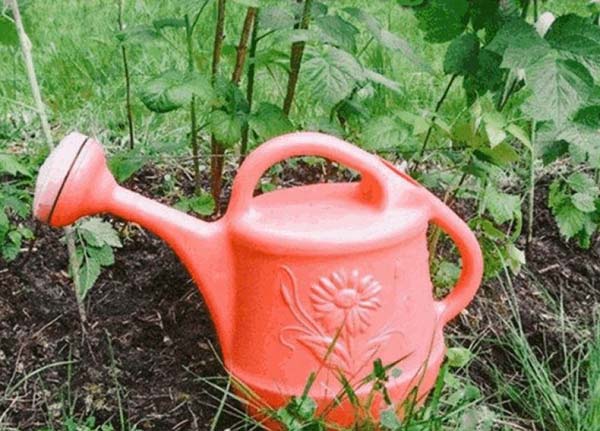
Important! Do not water raspberries often and little by little. In this case, moisture saturates only the adventitious roots, but it simply does not reach the main ones.
Watering itself is carried out depending on weather conditions. If the weather is sunny and dry, then this should be done, of course, more often. If it is cloudy and rainy, then less often, but you should always monitor the humidity.
Note! The most important periods when raspberries need water most are before flowering and during fruiting (but before picking berries).
Moreover, if you have remontant raspberries, then it must be shed abundantly after the first harvest.
And, of course, do not forget about the autumn water-charging irrigation, which is needed by almost all berry bushes and fruit trees.
Watering raspberries in the spring should be carried out not only at the root (more precisely), but also by sprinkling.
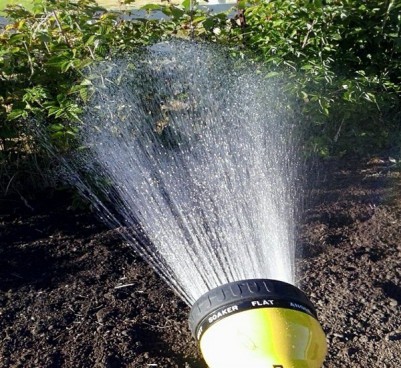
Naturally, the most efficient way is drip irrigation - only in this way can you constantly keep the entire earthen lump in a wet state.
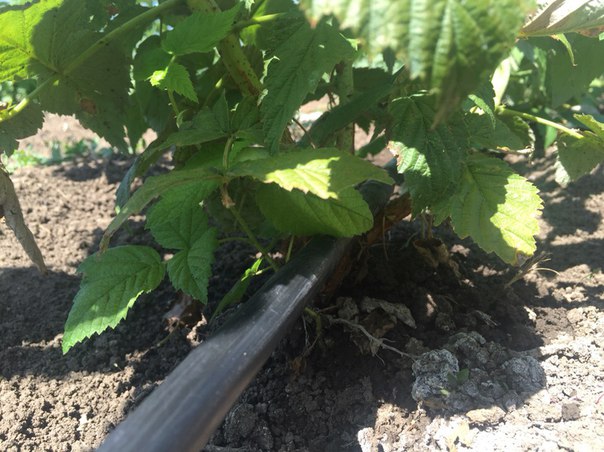
Loosening
The loosening procedure is carried out after watering so that an earthen root does not form.
Thus, due to loosening, the access of air, moisture and nutrition to the plant roots is improved. Moreover, it is better to do this with a special hoe (by 5-6 cm), in no case with a shovel, because raspberries have a superficial root system (like many shrubs).
Mulching
This is one of the most important auxiliary agrotechnical methods, which can significantly simplify the care of raspberries, and therefore have a positive effect on its yield.
Why mulch raspberries:
- To water less. Thanks to the mulch, moisture will be stored longer and not evaporated.
- After watering, no dry crust will form, and the soil will always be loose.
- Weeds, which raspberries do not like so much, will not grow under the mulch.
- Mulch is also a great organic food.
How can raspberries be mulched? For this, mown grass, hay, straw, rotted sawdust, peat, humus, compost are suitable.
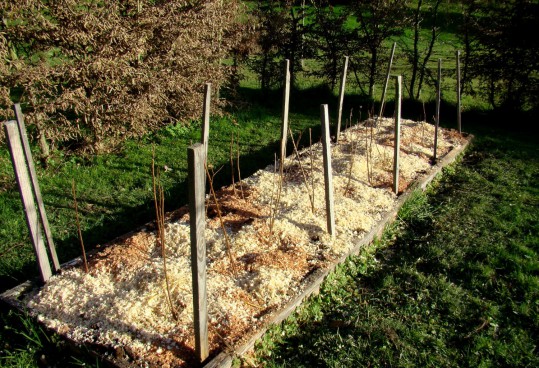
Important! Do not mulch the already heavy soil, otherwise it will acidify even more. In this case, you just need to loosen after each watering.
Top dressing
If, when planting raspberries, you have laid a sufficient amount of nutrients (organic and mineral fertilizers), then you will have to start feeding raspberries only in the 2-3rd year.
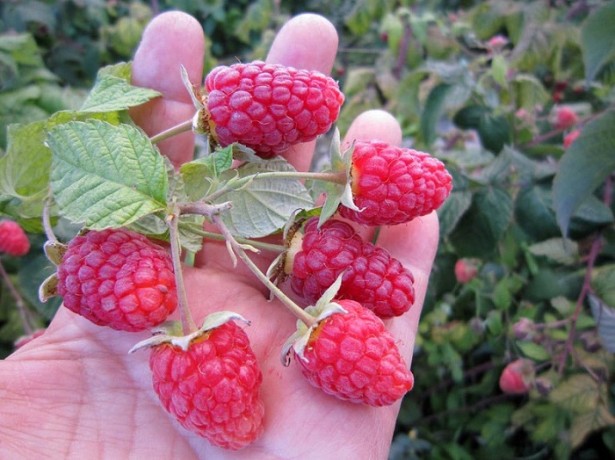
In short, the scheme for feeding raspberries in spring and summer is as follows:
- in early spring (before flowering) - nitrogen fertilizers (for growing shoots and leaves);
- during the flowering period - a little nitrogen, more potassium and a little phosphorus (for filling large berries);
- after flowering and at the beginning of fruiting - a lot of potassium and phosphorus;
- after fruiting and harvesting (in autumn) - phosphorus and potassium (for setting flower buds and successful wintering).
Advice! The site already has detailed materials about spring feeding raspberriesand also about autumn.
Video: proper watering and feeding raspberries in spring
Pruning
The main pruning of raspberries is performed, as a rule, after fruiting (in autumn), a in early spring do only corrective, or rather sanitary pruning.
So, if you have already pruned raspberries in the fall, then you just need to completely remove or cut off all unripe, frozen, broken, dry and damaged shoots to healthy wood.
If not, then you need to conduct a full spring raspberry pruning, namely, to remove old, fruiting shoots, as well as to pinch new ones in order to enhance their branching (growth of lateral branches) = fruiting.
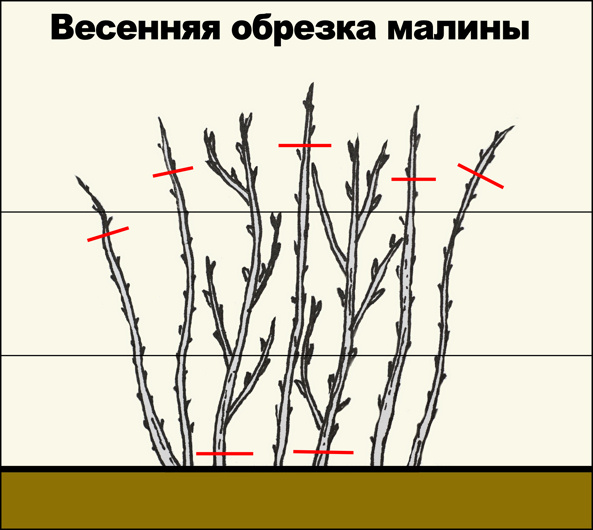
For the future! Of course, if you haven't had the opportunity to trim raspberries in the fallthen it is better to trim in the springthan not trim at all.
But still it is recommended to cut raspberries annually exactly after fruiting and harvesting (i.e. autumn).
Thinning
To prevent excessive thickening of your raspberry plantation, after many new green shoots appear by mid-late spring, they should be carefully thinned out, leaving only the strongest and most well-located ones, while there should be no more than 6-8 pieces per 1 sq. ... meter.
Thinning raspberries is very convenient after heavy rain or watering when the soil is wet.
Video: thinning raspberries in spring
Garter
By the way! If in the fall you bent the bushes to the ground or tied them into a bunch, then, naturally, they should first be released.
Raspberries will bear fruit well only if they grow in a sunny area. However, it is not enough just to plant bushes in an open and lighted place, because there are a lot of shoots, they will corny shade each other. And then a garter will come to your aid.
The procedure itself is most often carried out immediately after spring pruning.
It is the correct raspberry garter that is able to provide each fruiting shoot with the necessary solar nutrition.
Important! About, how to tie up raspberries in spring and autumn, you can read in this material.
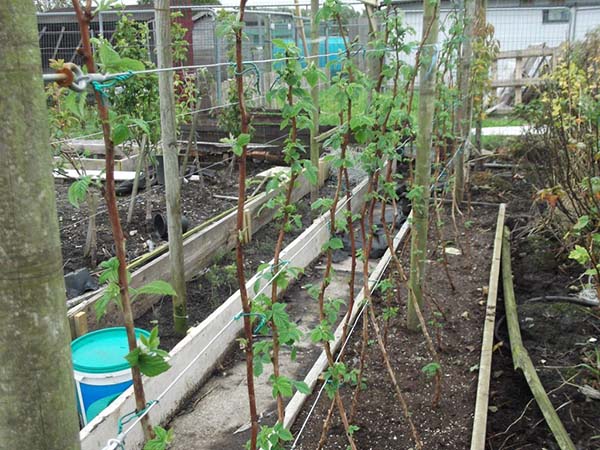
Treatment against diseases and pests
After you have done your spring pruning, it's time to process the remaining shoots from diseases and pests.
Advice! About, what and how to spray raspberries in the spring, written in detail in this material.
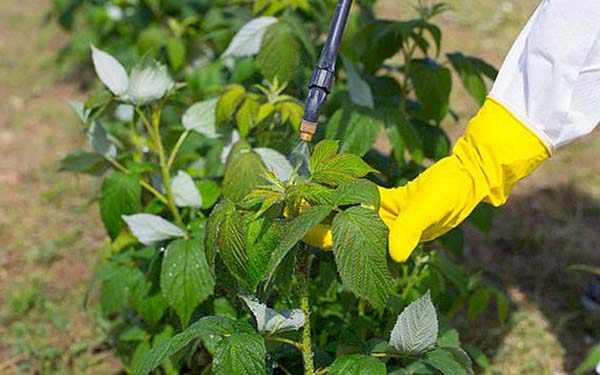
Transfer
Typical reasons for determining that you should undergo a raspberry transplant:
- The main reason is overgrowth and thickening raspberry.
As a result, the soil is depleted, the bushes begin to shade themselves and do not receive the necessary nutrition (including lack of light) for good fruiting, respectively, the yields become smaller in volume (quantity) and worse in taste (quality).
Dense plantings can also cause the rapid spread of various diseases due to poor ventilation (air circulation).
- The transplant itself stimulates the appearance of new shoots, which means that the bush is renewed (refreshed).
- Neatly planted shrubs keep your garden as tidy as possible.
Thus, it is recommended to do the planting and transplanting of the raspberry tree to a new place every 4-5 years. But, of course, if the fruiting and quality of the berries do not deteriorate, then the procedure can be postponed for a couple of years.
More about how to properly plant and transplant raspberries in spring, summer or autumn, read in this article.
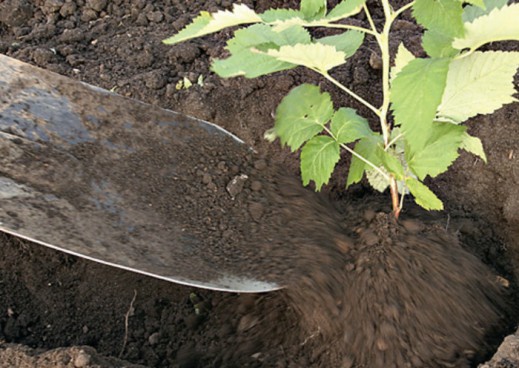
Features of caring for remontant raspberries in spring
The whole difference between remontant and regular raspberries is that remontant raspberries can bear fruit both on the shoots of the current year and the past, i.e. instead of one harvest, you can get two (1 time - in June-July, 2 times - in August-September).
Therefore, it is quite logical that remontant raspberries are more demanding on light, watering and fertilizing than ordinary ones, which is explained by their greater fertility.
Interesting! However, it is worth knowing that the second (autumn) harvest of remontant raspberries is less tasty, while the first (summer) harvest is not inferior to the usual one.
Nevertheless, it makes sense to have both regular and remontant varieties on the site in order to collect tasty and healthy berries in summer and autumn.
Video: features of planting and caring for remontant raspberries
Opinion! According to the observations of some gardeners, it is very convenient to grow remontant raspberries in a one-year cycle, since in this case it does not require any treatments, while ordinary raspberries are constantly affected by something and need mandatory treatment against pests and diseases.
Typical mistakes in caring for raspberries in spring
Many gardeners try to grow a large raspberry tree with delicious berries on their backyard. To achieve good results, you need to properly care for your raspberries in the spring. Therefore, it is important to know what mistakes can be in this matter.
The most common mistakes made by inexperienced gardeners when caring for raspberries in spring are:
- untimely start and implementation of specific work (for example, it is recommended to cut it off before the start of sap flow and swelling of the kidneys, and you can mulch later);
- wrong order (it makes no sense to first process raspberries from diseases and pests, and then prune them, it is better to do it the other way around);
- illiterate pruning or lack of it;
- improper feeding (applying too much nitrogen fertilizers, lack of potash fertilizers) or even its absence;
- bad or wrong garter;
- ignoring preventive measures to protect raspberries from pests and diseases.
Knowledgeable means armed! Good harvests to you!
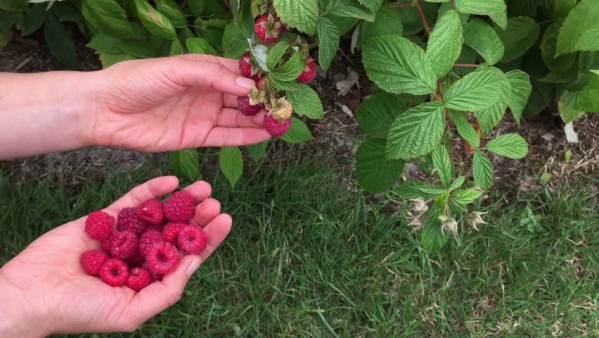
Thus, by performing the simple measures listed above for the spring care of raspberries, you can help the berry bush quickly recover after winter and direct all your efforts to abundant fruiting.
Video: spring work with raspberries

